Our bodies require energy for various activities, which is derived from the breakdown of food molecules such as proteins, carbohydrates, and fats. This process needs oxygen and produces carbon dioxide. Thus, a continuous exchange of these gases is essential, involving the intake of oxygen from the atmosphere and expulsion of carbon dioxide. This process is known as breathing or respiration.
Modes of Gaseous Exchange and Respiratory Organs in Animals
| Mode of Gaseous Exchange | Respiratory Organs | Examples |
| Cutaneous respiration | Skin | Poriferans, coelenterates, flatworms, earthworms, amphibians (frogs) |
| Tracheal | Spiracles | Arthropods (cockroaches) |
| Branchial respiration | Gills | Aquatic animals like arthropods, molluscs, and fishes |
| Pulmonary respiration | Lungs | Terrestrial vertebrates including humans |
Human Respiratory System
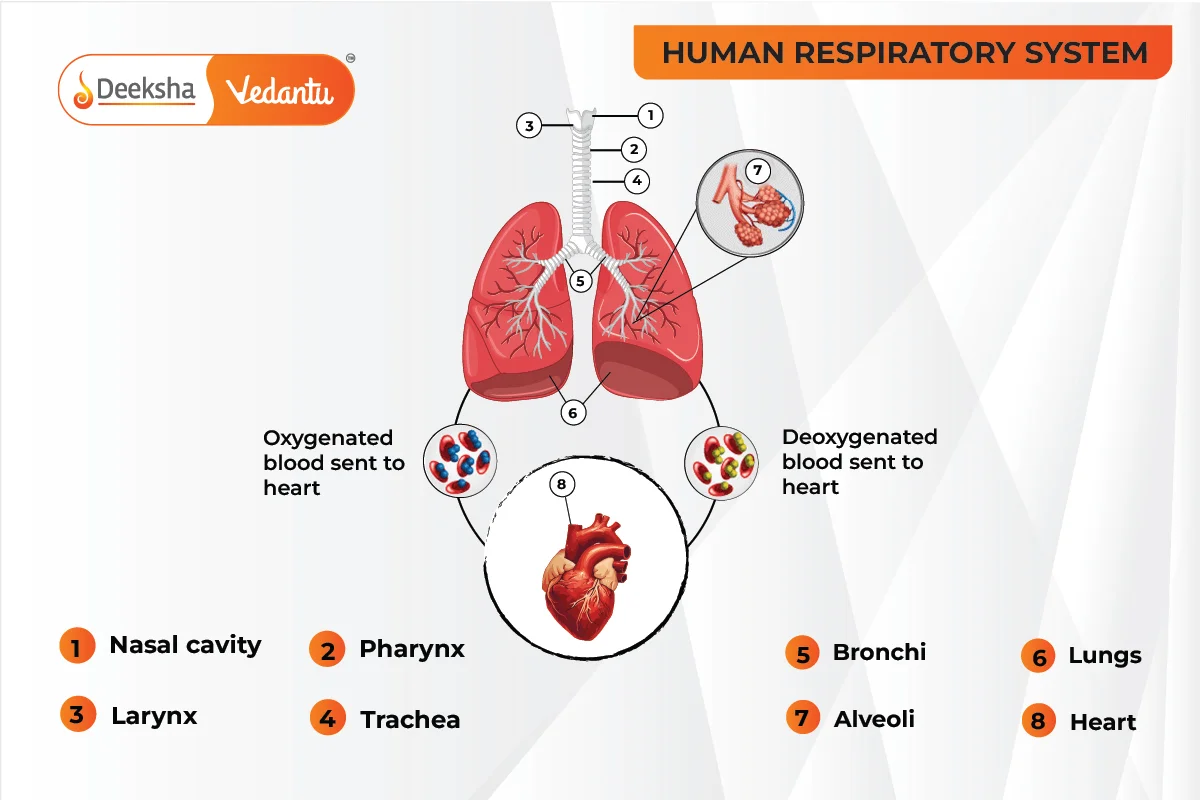
The conducting part of the respiratory system consists of:
- Nostrils
- Pharynx (common passage for food and air)
- Larynx (soundbox, with epiglottis to prevent food entry)
- Trachea (divides at the 5th thoracic vertebra)
- Primary bronchi (right and left)
- Secondary and tertiary bronchi
- Bronchioles (terminal)
Bronchioles end in alveoli, which participate in gas exchange. Lungs, covered by the pleural membrane (a double-layered structure with pleural fluid in between), are located in the thoracic cavity. This cavity is formed by the vertebral column (dorsal side), sternum (ventral side), ribs (laterally), and diaphragm (lower side).
Process of Respiration
- Pulmonary respiration (intake of atmospheric oxygen and release of CO2-rich alveolar air)
- Diffusion of O2 and CO2 across the alveolar membrane
- Transportation of gases by blood
- Diffusion of O2 and CO2 between blood and tissues
- Cellular respiration (catabolism of food using O2 to release energy and CO2)
Breathing Mechanism
- Inspiration: Lower intrapulmonary pressure causes atmospheric air to be taken in. The diaphragm and intercostal muscles contract, increasing pulmonary volume and lifting ribs and sternum, allowing air into the lungs.
- Expiration: Higher intrapulmonary pressure forces alveolar air out. The diaphragm and intercostal muscles relax, reducing pulmonary volume, and ribs, sternum, and diaphragm return to their normal positions.
Breathing rate: 12-16 times per minute. A spirometer measures the volume of inhaled and exhaled air.
Respiratory Volumes and Capacities
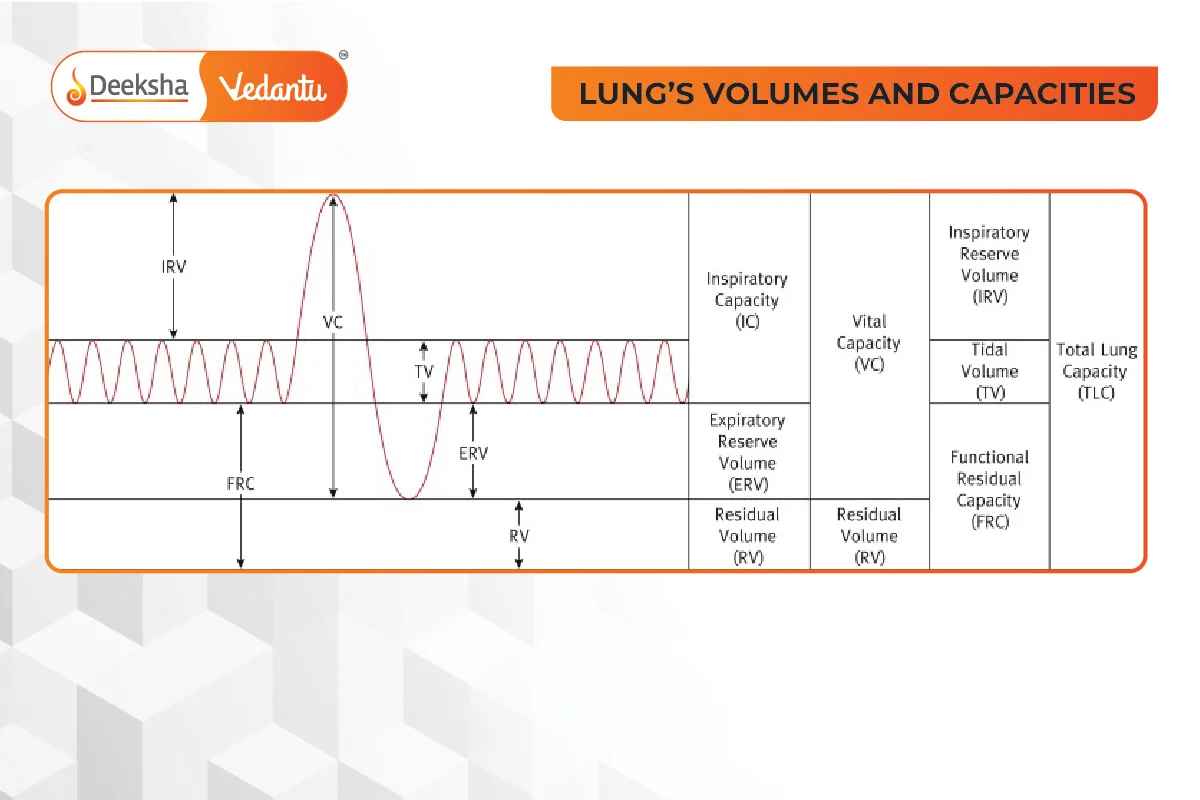
- Tidal Volume (TV): 500 ml, volume of air inspired or expired normally.
- Inspiratory Reserve Volume (IRV): 2500-3000 ml, additional air by forcible inspiration (TV + IRV = Inspiratory Capacity, IC).
- Expiratory Reserve Volume (ERV): 1000-1100 ml, additional air by forcible expiration (TV + ERV = Expiratory Capacity, EC).
- Residual Volume (RV): 1100-1200 ml, air remaining in the lungs after forcible expiration (ERV + RV = Functional Residual Capacity, FRC).
- Vital Capacity (VC): Maximum air volume breathed in or out after forced expiration or inspiration (IRV + ERV + TV).
- Total Lung Capacity (TLC): VC + RV.
Exchange of Gases
Gases exchange across pressure/concentration gradients:
- Oxygen Transport: 97% carried by RBCs as oxyhaemoglobin, 3% dissolved in plasma. Haemoglobin binds to oxygen in high pO2 and low pCO2 conditions (e.g., alveoli).
- Carbon Dioxide Transport: Transported as carbaminohemoglobin (20-25%), bicarbonate (70%), and dissolved in plasma (7%). Enzyme carbonic anhydrase facilitates conversion of CO2 to bicarbonate and vice versa.
Regulation of Respiration
The respiratory rhythm center (medulla) and pneumotaxic center (pons) regulate respiration based on the body’s demands.
Disorders of the Respiratory System
- Asthma: Inflammation in the respiratory tract causing wheezing and breathing difficulties.
- Emphysema: Alveolar wall damage, often due to smoking, causing breathlessness.
- Occupational Respiratory Disorder: Long-term dust exposure causing inflammation, fibrosis, and lung damage.
FAQs
Alveoli are tiny air sacs in the lungs where the exchange of oxygen and carbon dioxide takes place between the air and the blood.
Asthma is caused by inflammation and narrowing of the airways, leading to difficulty in breathing, often triggered by allergens, pollutants, or respiratory infections.
Residual volume is the amount of air remaining in the lungs after a forceful expiration. It prevents lung collapse and ensures continuous gas exchange even between breaths.
The diaphragm contracts during inspiration, increasing thoracic cavity volume and reducing pressure to draw air into the lungs. It relaxes during expiration, reducing volume and increasing pressure to expel air from the lungs.
Oxygen is transported in the blood primarily by binding to haemoglobin in red blood cells, forming oxyhaemoglobin.
The primary function of the respiratory system is to facilitate the exchange of gases, mainly oxygen and carbon dioxide, between the body and the environment.





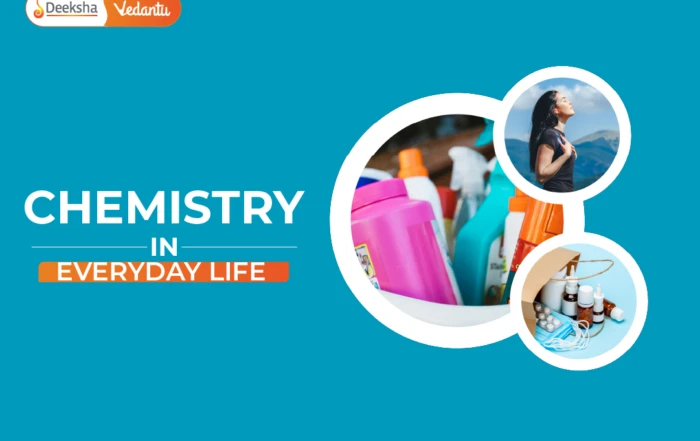
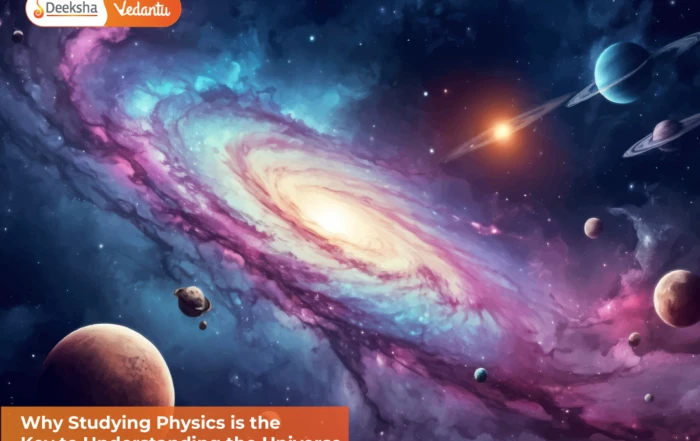

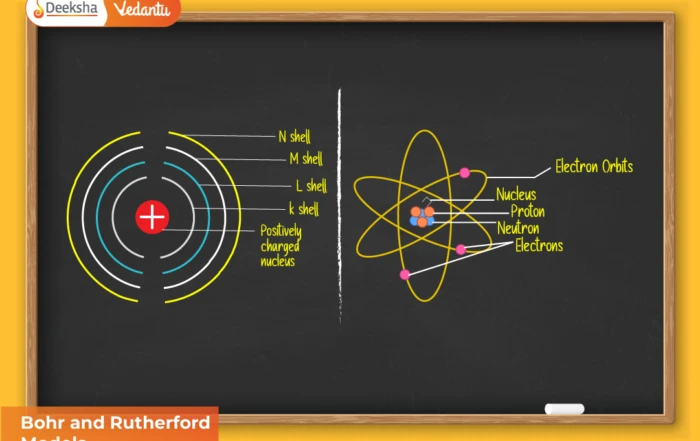


Get Social